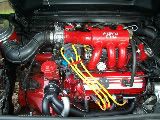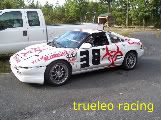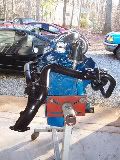In the process of rebuilding my GT, I've been cleaning suspension and frame parts for powdercoating. I have a sandblasting cabinet, but that takes forever given how heavy the rust is on some of these parts. Finally I started looking into acid dipping for rust removal. Being that I'm trying to stick to some kind of budget, I wanted to do the work myself. So muriatic was my first interest as a diy rust eater. A little research showed however that it's not a good choice, as it gets into the pores of the metal and can never be completely neutralized. This of course results in corrosion from the acid itself. After some more looking around, I found that phosphoric is the acid of choice for rust removal. It eats the rust, but doesn't corrode the metal (apparently). As I looked around, I found some references to a Klean-Strip product called "Prep and Etch". which is a phosphoric acid based product. Aside from being effective, it's pretty inexpensive at $15 a gallon. I went to Home depot and picked up three gallons.
The process with this stuff is to spray or brush it on, and let it dry, much like most other rust converter product. But I saw some complaints in using that method, the primary one being that it leaves behind a sludge that never seems to dry completely. As a result of my own experimenting with different methods, I devised my own method, which works well for somewhat smaller parts. First, I have a "dirty" container which holds 1 - 1.5 gallons of the product. I actually soak my parts in this container. How long depends on the severity of the rust. If it's light rust, this step probably isn't necessary. But since I'm mainly dealing with suspension parts, everything is (was) pretty heavily rusted. After soaking in the container for up to two or three days, I remove the parts, and rinse off the sludge that's left behind. The result (in most cases) is a part that literally looks brand new, except for any scarring from the rust. The problem is, that the part will flash rust as it dries. To resolve that, once the part is completely dry I apply a very *thin* coat of the same product from a clean batch with a brush, and let it dry. This leaves a surface that is sealed and etched, ready for paint. I haven't applied powder coating over any of the treated parts yet, but I assume that should work fine as well. I'll update after I've had a chance to try that out. One thing I noticed is that once in a while the second application of the acid will result in some foaming. Whether that is the result of the part not being completely dry and the acid mixing with some residual water, or something else, I'm not quite sure. But I just wipe that off with a shop rag and it seems to be fine.
Anyway, these are some pictures of how well this stuff works.
This is a rear strut assembly right before being pulled apart, and represents the condition of the parts before being soaked in the acid:

Here is the spring hat after soaking for a couple of days, and after washing off the black sludge that was left behind. The untreated hat is there to show how it looked before I started. There was no prior treatment of the part, I just plunked it in the acid as it came off the car.

Here is the spring hat and a brake shield after being washed of the sludge, and the second application of the acid. These parts are ready for paint or powder just as they are. A word on the brake shield; I previously tried to clean one from the front and had the worst time of it. I tried abrasive blasting with 80 grit aluminum oxide, I tried the wire wheel, and eventually ended up with a soft grinding pad on my hand grinder to get it clean. The grinding of course removed a lot of metal in the process. This shield went into the acid just as it came off the car. I was amazed at well it worked.

Anyway, I just thought I would pass this along. I made reference to it in another thread and thought it was worth posting as a separate thread for those who are doing any restoration work.
[This message has been edited by Taijiguy (edited 07-26-2011).]

























